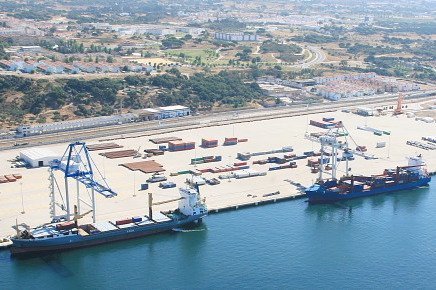Portuguese port touts gateway claims with significant new berth additions

A port just to the south of Lisbon is trying to position itself as a gateway to Europe with significant new berthing capacity announced. The Port of Setubal, located 40 km south of the Portuguese capital and run by local company Blue Atlantic, has announced plans to build an 800 m long quay capable of berthing tow panamax vessels concurrently.
“This development would transform the commercial potential of the seaport facility accommodating multi-purpose vessels including containers, bulk and cargo carriers,” Fernando Fernandes, Blue Atlantic project lead, said.
The 96-hectare site is linked to Portugal’s main highway system and permission has been granted to build a rail line that would link it to the country’s rail network.
“The sea is regarded as a national plan for the future and the country has a firm strategy to promote maritime transport, naval construction, fishing and fish processing, among other activities,” Fernandes said, adding: “There has never been a better time to invest in Portugal and its key port locations such as Setubal which benefit from strong trade relationships with Spain, France, Italy, United Kingdom and Germany. We are also witnessing a surge in business activity with the CPLP countries (Community of Portuguese Speaking Countries) – which form a market of 250m consumers. Any business looking to place their operation at Blue Atlantic could capitalize on long established trade connections with the likes of Angola and Brazil opening up gateways to broader markets across Africa and South America.”
